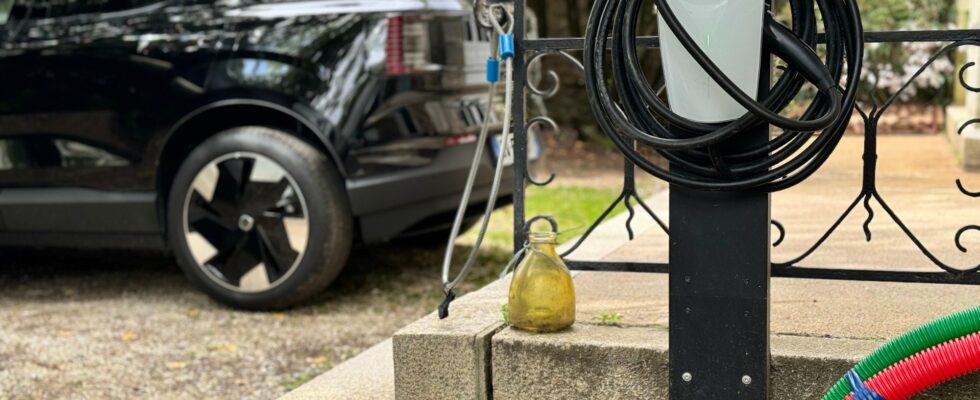Are you considering buying an electric car but wondering about the best way to charge it at home? This article details the advantages and disadvantages between reinforced sockets and charging stations (wallboxes).
Charging an electric car at home is not as simple as plugging in an electronic device. Between the domestic socket, the reinforced socket and the Wallbox, find out which option is best suited to your daily needs. This is an opportunity to share with you a little of our experience with electric cars.
The limits of the domestic socket
The traditional power outlet, or domestic outlet, is not the most suitable solution for recharging your electric car. In fact, it limits the charging intensity to 10 A, or a little more than 2 kW, and presents a big risk of overheating. In addition, charging is particularly slow and can damage the socket by plugging and unplugging the charger. It is therefore recommended to use a domestic socket only in exceptional circumstances, and to opt for a solution more suitable for regular use.
It also requires precautions such as the use of high quality extension cords and their complete unwinding to avoid any danger of heating.
The reinforced grip
Reinforced sockets, like Legrand’s Green’Up, offer higher charging power than traditional electrical sockets. They work with a 3.7 kW (16A) power outlet and allow more efficient charging than with a domestic outlet.
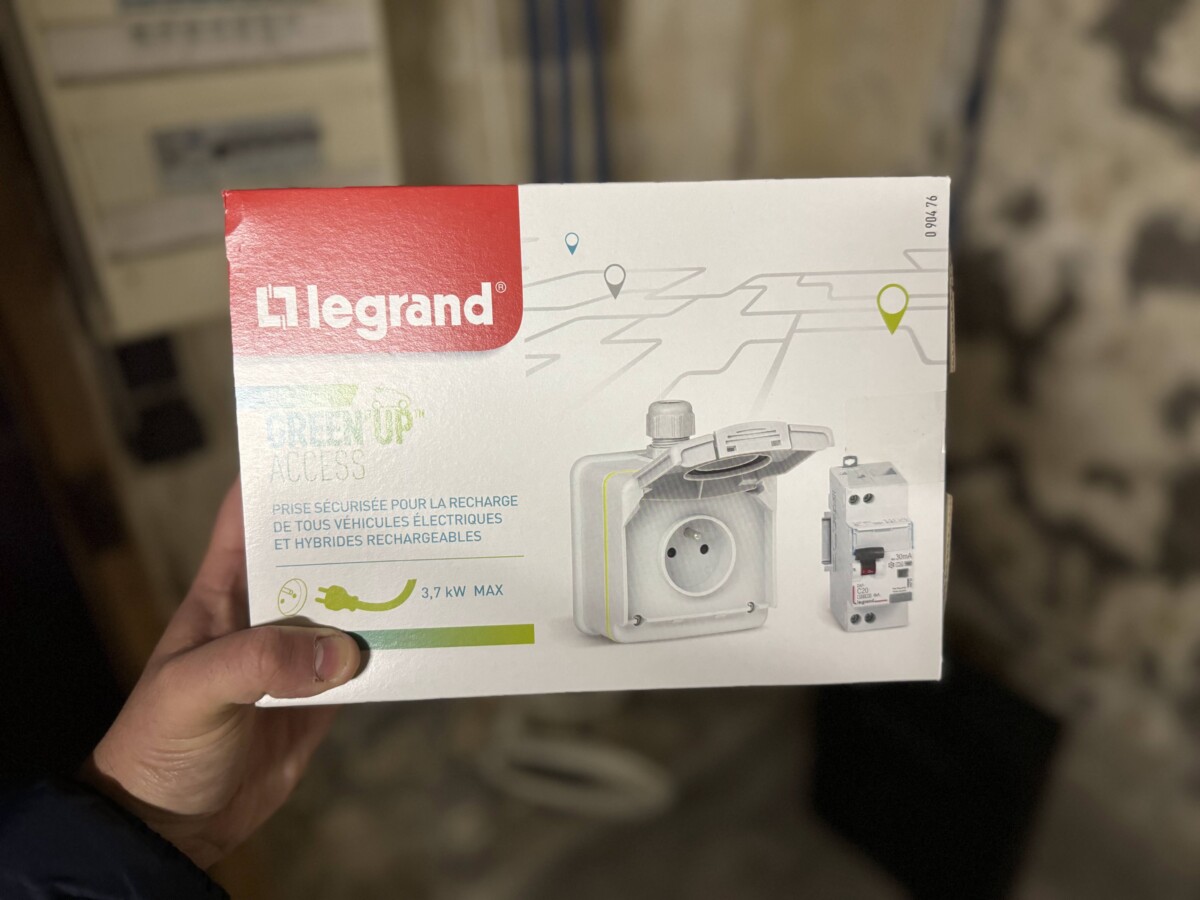
Resistant and suitable for outdoor installation (generally IP55), it constitutes an interesting compromise for those looking for an effective solution without investing in a heavier installation. However, although more efficient than a traditional socket, it requires a dedicated circuit to optimize the safety and efficiency of charging. Note, moreover, that the reinforced socket requires the installation of a dedicated electrical circuit.
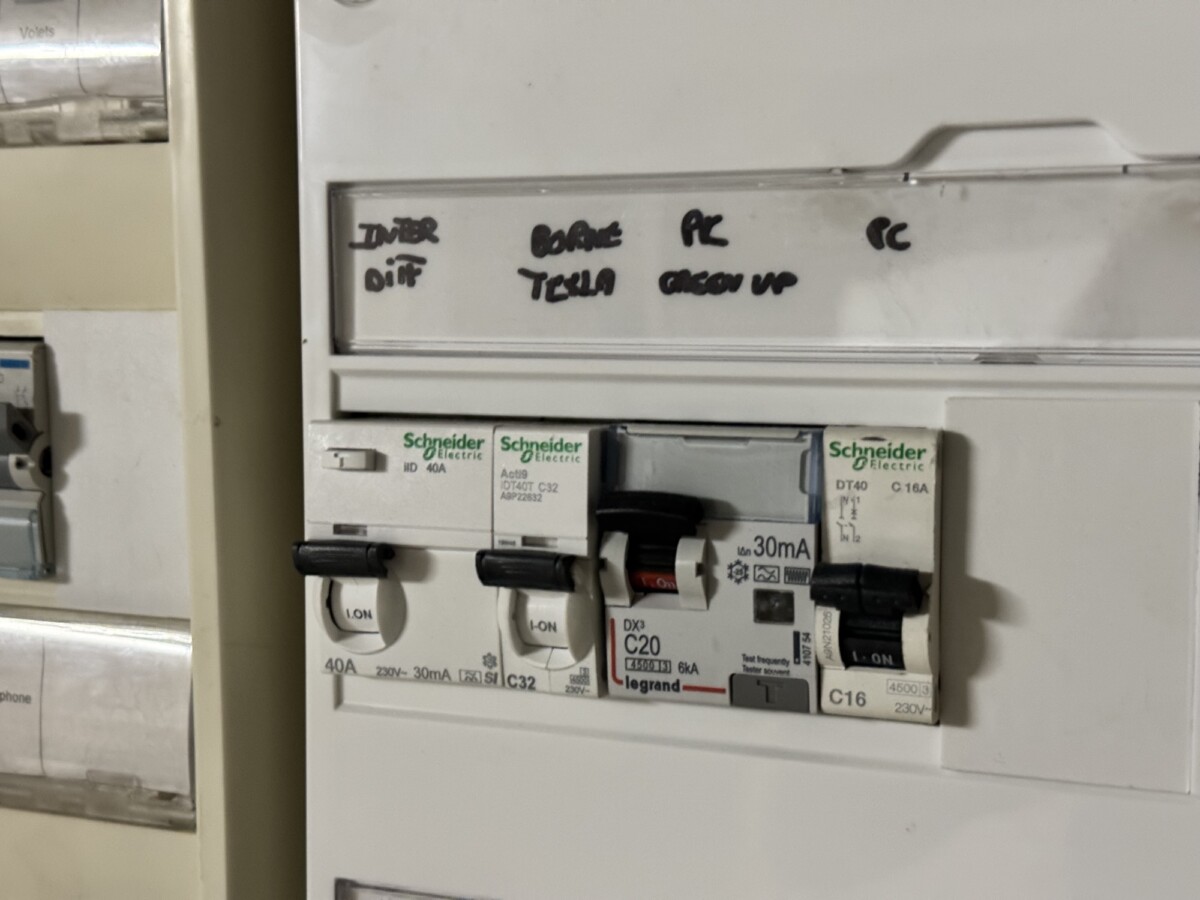
There are different models of reinforced sockets, such as the Mureva EVLink from Schneider Electric or the Green’Up from Legrand. The cost of a kit including the socket and the differential circuit breaker is around 150 to 200 euros, to which must be added around 200 euros for installation. This solution entitles you to financial aid.
Our advice : check that your mobile charger goes up to 16A in type 2. Personally, I opted for a charger dedicated to the reinforced socket for around a hundred euros.
The wallbox or charging station
The charging station, or wallbox, is the most efficient solution for recharging your electric car at home. It allows recharging 2 to 3 times faster than a reinforced socket, i.e. approximately 4 to 6 hours. This is the ideal solution if you cover many kilometers every day or if you are a road professional (VTC, taxi, etc.).
Depending on your electrical installation (single-phase or three-phase) and the capacity of your car (on-board alternating current charger), you can obtain a charging power ranging from 7.4 kW to 22 kW. However, the Wallbox is also the most expensive solution, with a price ranging from 400 to 800 euros for the terminal, and from 1000 to 2000 euros for the installation.
To reduce the cost of installing a Wallbox, individuals can benefit from a tax credit of 300 euros and VAT reduced to 5.5% for individual homes over 2 years old.
Sharing my experience
Since switching to an electric car, I’ve been able to test different home charging options. I started with a reinforced Green’Up type grip, which has the advantage of being versatile and affordable. In fact, it can be used to charge other electrical devices, such as a karcher or an electric bike.
For the car, I added a dedicated charger which costs around 80 euros and which allows you to take advantage of all the available power (16A). For me, this is the best solution for most people, as it offers a good compromise between security, charging time and economy.
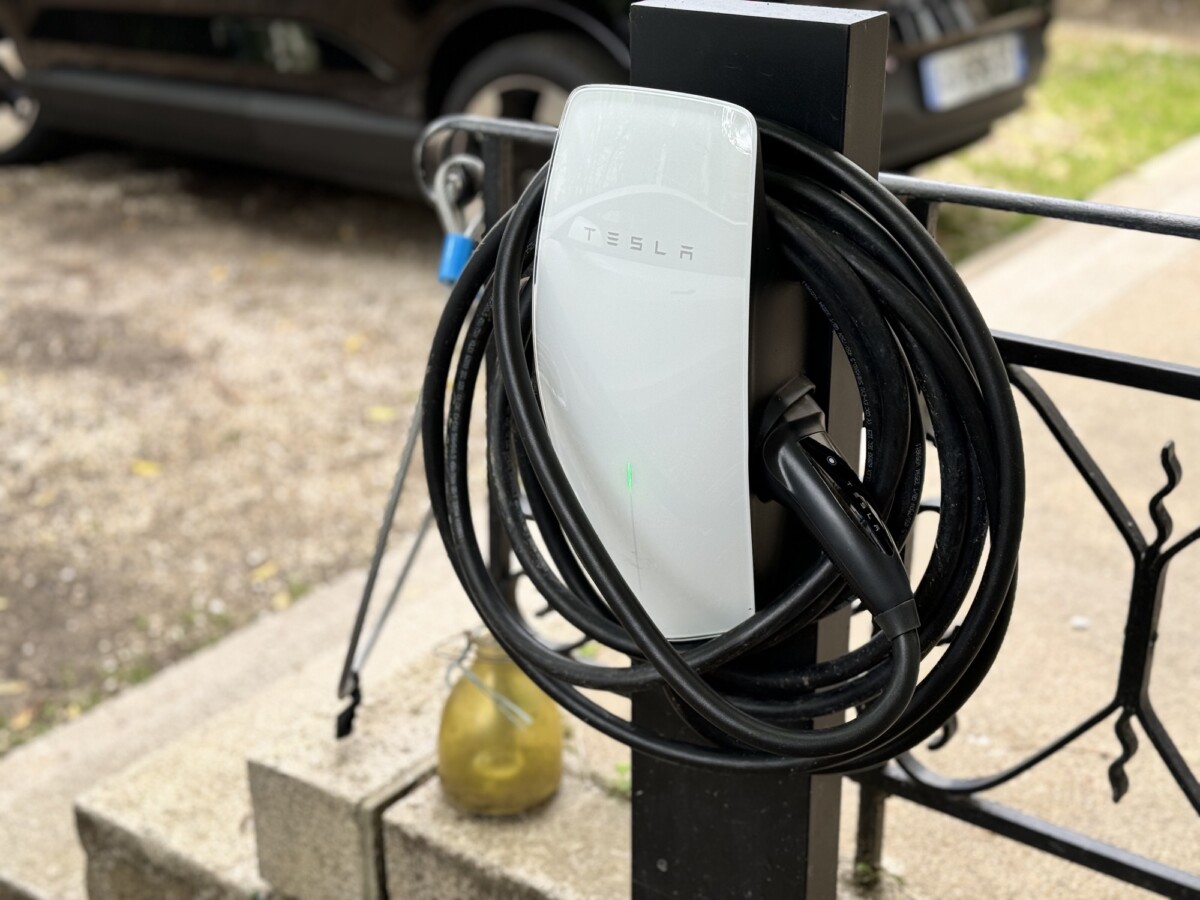
I then installed a Tesla Wall Connector charging station, which costs a little over 500 euros, or 800 euros with installation and copper on top. This terminal is very aesthetic and easy to use, with a 7.3 m cable that wraps around the terminal. It can deliver up to 22 kW of power for three-phase installations (7.4 kW in single-phase), which allows the car to be recharged quickly. I also like the fact that it is compatible with all electric cars and that you can check the charging history on the Tesla app.
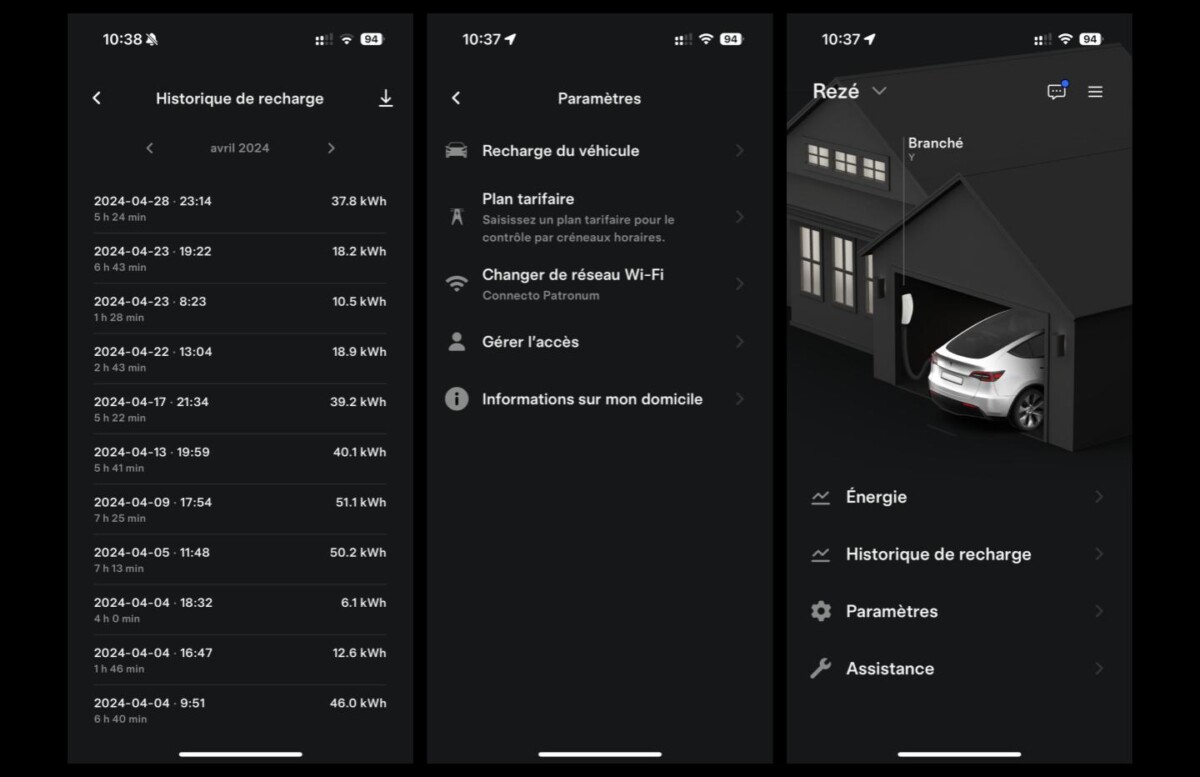
That being said, there are many charging stations on the market, with different features and prices. Some terminals offer automatic load shedding, which allows the charging power to be adapted according to the household’s electricity consumption. Other terminals are simpler and less expensive, but offer fewer features. The choice also depends on the approved electrician (IRVE qualified) who installs the terminal.
Regarding the charging power, you should know that it depends on the voltage, current and the number of phases. For example, on my Volvo EX30 I can get up to 11 kW on 3 phase (230 V x 16A x 3), but only 7.3 kW on single phase (230 V x 32A x 1). It is therefore important to choose the right terminal according to the maximum power accepted by your car and its electrical installation.
So, reinforced socket or wallbox?
As you can see, the choice between a reinforced socket and a charging station depends on several factors, such as budget, desired power, compatibility with the car and electrical installation. In all cases, it is recommended to use an approved electrician for the installation, in order to guarantee the safety and conformity of the installation. And if you want to benefit from aid, you have no choice.
My personal experience with these installations shows that the reinforced socket is ideal for those looking for an economical and flexible solution for charging electric vehicles as well as other devices. However, for faster and more regular charging, the charging station is very practical. Especially if you have opted for a peak/off-peak offer, or other energy offers with a specific time slot.
A special mention: the P17 socket
There is another option: the P17 socket, also known as an industrial socket or CEE socket. It is a type of electrical connector that is often used for industrial applications due to its robustness and ability to handle high power. We often find them for camping. This socket is designed for voltages ranging from 230 V (single phase) to 400 V (three phase) and can withstand currents of up to several tens of amps, depending on the size and model of the socket.
When it comes to electric vehicle charging, the P17 socket can be used as a charging solution, with an adapter. Unfortunately, the NFC 15-100 standard prohibits the installation of P17 sockets in a residential environment to recharge an electric vehicle. This means that in the event of a loss, your insurance will hold you liable and may refuse to compensate you. The P17 socket is therefore not illegal, in itself, but it does not meet the standards. Therefore, make sure that your installation is carried out in very good conditions.
What financial aid?
To encourage the adoption of electric vehicles, several financial aids are available in France for the installation of a reinforced socket or a Wallbox at home. Here are the main aids:
MaPrimeRénov’
This assistance, available to owners and, since July 2021, to co-owners, makes it possible to finance part of the installation costs of a Wallbox. The amount of aid depends on household income and the ecological gain of the installation. For reinforced sockets, this assistance may be less systematic, but it is often accessible as part of a broader energy renovation.
VAT reduced to 5.5%
The installation of a Wallbox benefits from reduced VAT at 5.5% instead of 20%, which directly reduces the cost of installation. This reduction applies to labor and equipment if the house is more than two years old and the installation is carried out by a certified professional.
Local subsidies
Many regions, departments or municipalities offer additional assistance for the installation of home charging stations. This aid can take the form of direct grants, zero-interest loans or additional tax reductions.
Future
The Advenir program, supported by ADEME and managed by AVERE France, has the mission of promoting the installation of charging stations for electric vehicles in France since 2016.
Aimed at individuals, condominiums, businesses and fleet managers, Advenir offers subsidies covering up to 40% of installation costs, with conditions such as compliance with standards, the use of connected terminals and, for certain projects, public accessibility of facilities.
For individual use, the aid will subsidize up to 50% of the IRVE, capped at 960 euros excluding tax per charging point.
Want to join a community of enthusiasts? Our Discord welcomes you, it is a place of mutual help and passion around tech.
